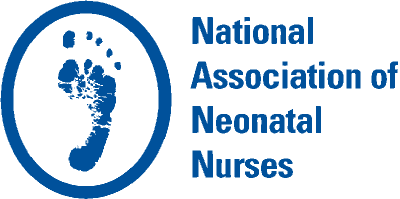Special Interest Group Update
In each issue, one of NANN's special interest groups shares information in their area of focus.
Disclaimer: The information presented and opinions expressed herein are those of the author and do not necessarily represent the views of the National Association of Neonatal Nurses.
Addressing Nursing Violence: Ensuring Safety and Support in the Line of Duty
Tosha Harris, DNP APRN NNP-BC, NANN E-News Editor
Nurses are the cornerstone of our healthcare system, providing compassionate care and support to patients in their most vulnerable moments. However, this dedication comes at a cost, as nurses are increasingly becoming targets of workplace violence.
Violence against nurses takes many forms, from verbal threats and harassment to physical assaults. Perpetrators can be patients, their families, or colleagues, creating a hostile and unsafe work environment. In 2023, National Nurses United (NNU) surveyed nearly 1,000 nurses working in 48 states and the District of Columbia about their experiences of workplace violence.
The following are some of the significant findings published in their report:
- “Eight in 10 nurses (81.6 percent) have experienced at least one type of workplace violence within the past year” (NNU, 2024, p. 3).
- “Nearly half of nurses (45.5 percent) reported an increase in workplace violence on their unit in the previous year” (NNU, 2024, p. 3).
- “The three most common types of violence reported were being verbally threatened (67.8 percent), physically threatened (38.7 percent), and being pinched or scratched (37.3 percent)” (NNU, 2024, p. 4).
- “Nurses also reported inappropriate responses to workplace violence incidents from employers, such as discouraging employees from reporting workplace violence incidents (16.9 percent), reprimanding or blaming employees (29.0 percent), or simply ignoring the incident (44.8 percent)” (NNU, 2024, p. 13).
Violence against nurses has far-reaching consequences and affects individuals' physical and mental well-being. Beyond immediate bodily harm, nurses who experience violence are at risk of developing psychological issues such as anxiety, depression, and post-traumatic stress disorder (PTSD). Violence can lead to decreased job satisfaction, burnout, and a desire to leave the profession, contributing to the ongoing nursing shortage crisis. Learn more about the specific and significant physical and mental impact that workplace violence has on nurses by reading the National Nurses United’s 2024 Workplace Violence Report.
The impact of violence against nurses extends beyond the individual to affect patient care and safety. Violence in the workplace can disrupt the delivery of care, compromise patient outcomes, and erode trust in the healthcare system. It also can lead to increased healthcare costs due to absenteeism, turnover, and the need for additional security measures.
With nurses being the most prominent professional group within healthcare, this is a significant issue for the profession and those working within it. Addressing violence against nurses requires a multifaceted approach that involves collaboration between healthcare organizations, policymakers, and other stakeholders.
In 2019, the American Association of Critical-Care Nurses (AACN) released a position paper, Preventing Violence Against Healthcare Workers, that laid the responsibility for the safety of staff, patients, and visitors at the feet of the healthcare institution.
AACN’s recommendations for action include (AACN, 2019):
- Educating all staff on how to recognize potential violent situations and additionally, providing them with de-escalation techniques and resources to prevent or respond to violence.
- Instituting a detailed and undeviating reporting system for violent incidents with specific guidelines in place for reporting to law enforcement.
- Encouraging employees to take advantage of enhanced penalty laws and press charges against violent offenders. Resources and support programs need to be made available to employees to assist them in managing violent incidents.
- Assessing staffing and patient classification systems to identify factors that may heighten or mitigate the risk of violence.
- Investing in security measures such as alarms, emergency response teams, and trained security personnel and making them accessible to guarantee the safety of every employee.
In addition to prevention strategies, it is essential to support nurses who have experienced violence. This includes providing access to counseling and mental health services and ensuring that they feel supported and valued in their roles. Creating a culture of support and empathy can help reduce the stigma associated with reporting incidents of violence and encourage open dialogue about this critical issue.
Violence against nurses is a serious and growing problem that requires immediate attention and action. By implementing prevention strategies, supporting affected nurses, and fostering a culture of safety and respect, we can create a safer work environment for nurses and improve the quality of care for patients.
We are entitled to a work environment that is respectful, civil, and safe. Are we holding the responsible parties accountable? Now is the time to stand together and say no to violence against nurses.
References
American Association of Critical-Care Nurses. (2019). Preventing violence against healthcare workers. https://www.aacn.org/policy-and-advocacy/aacn-position-statement-preventing-violence
National Nurses United. (2024). High and rising rates of workplace violence and employer failure to implement effective prevention strategies is contributing to the staffing crisis. https://www.nationalnursesunited.org/sites/default/files/nnu/documents/0224_Workplace_Violence_Report.pdf

